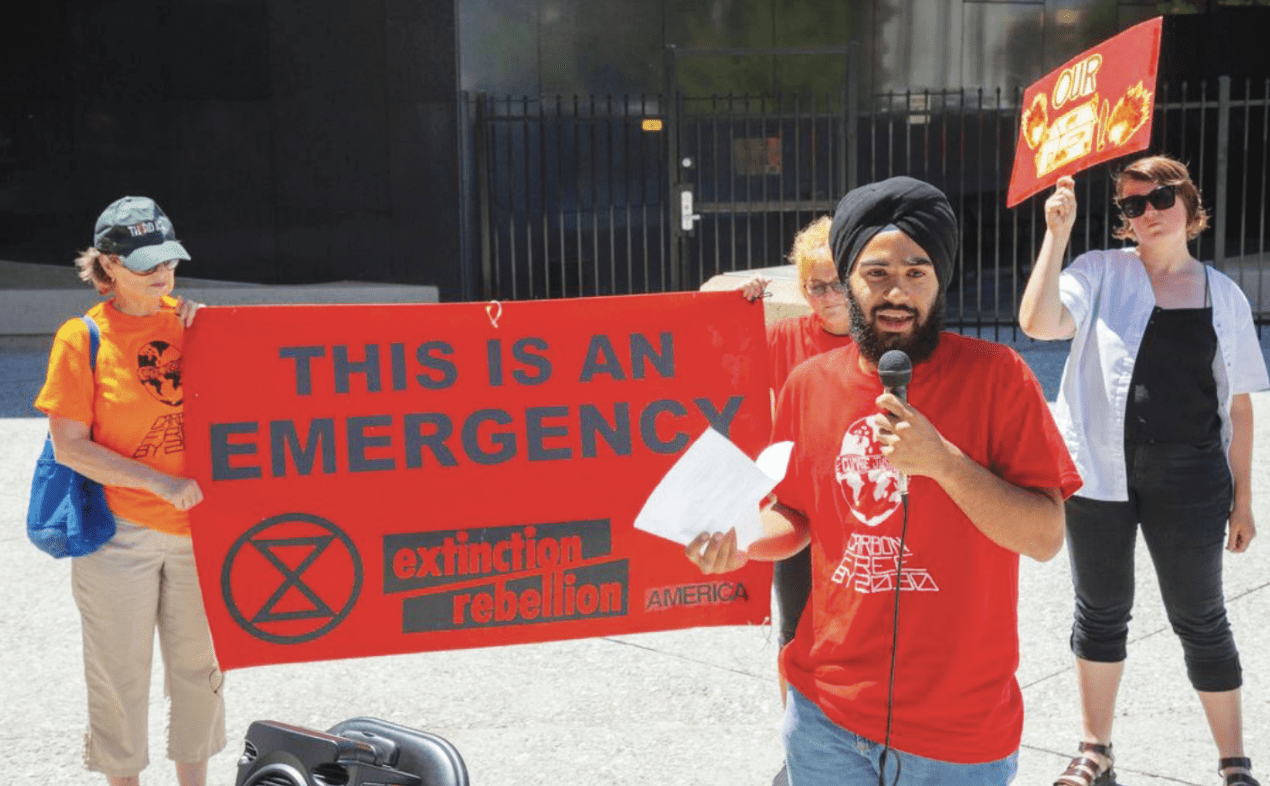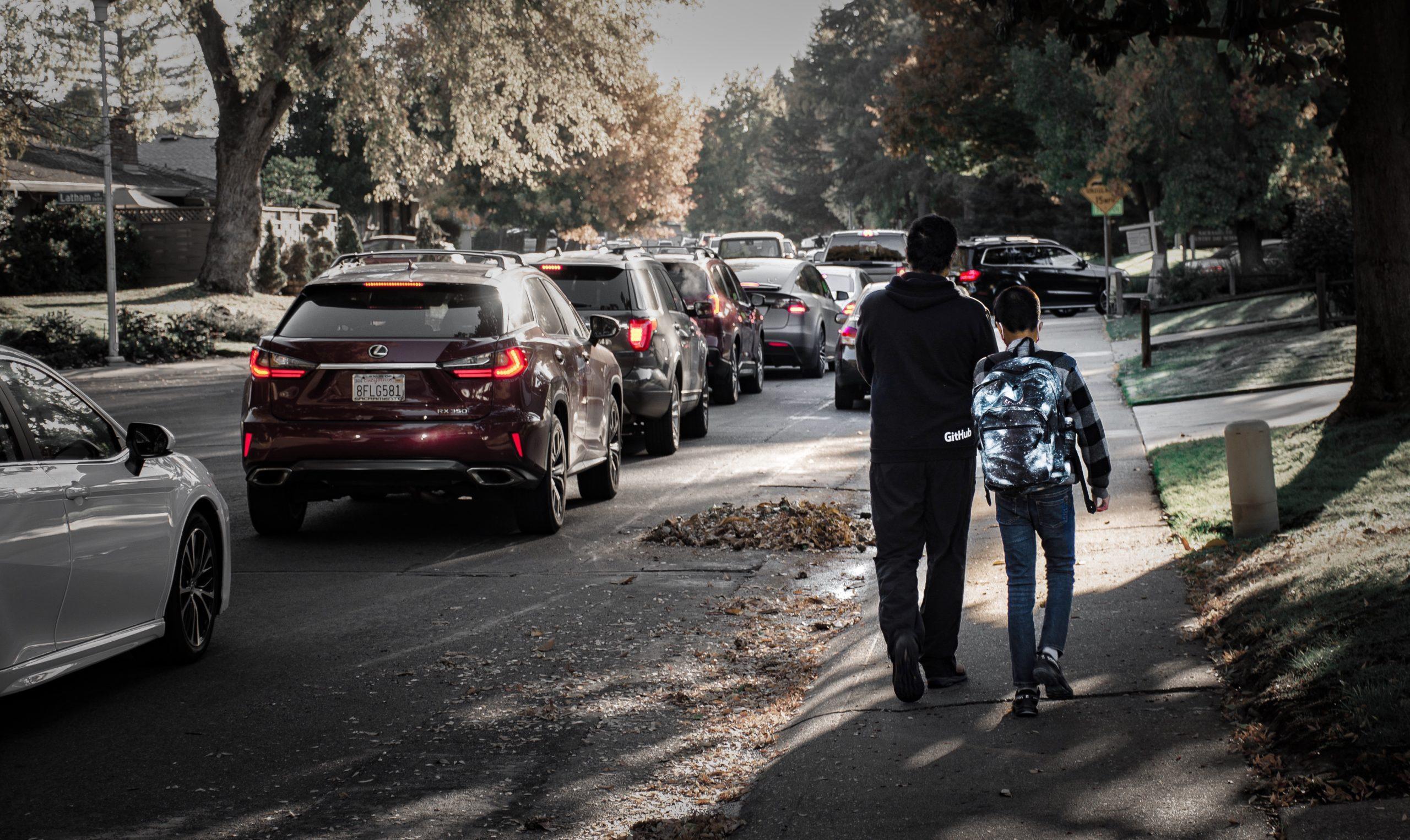Amidst the modern climate crisis, Sacramento lawmakers are seeking effective solutions to alleviate its impacts in safeguarding the planet’s future. However, Sacramento’s recent proposal seems to diverge against this global trend.
On July 11, 2023, the Sacramento County Board of Supervisors met to discuss a recommendation to amend the timeline of the county’s 2020 Climate Emergency Declaration. The proposed change — delaying Sacramento’s carbon neutrality goal from 2030 to follow the statewide goal of 2045.
In a vote of 3-1, with Supervisor Sue Frost abstaining, the board decided to postpone any definitive action, neither endorsing nor rejecting the recommendation — for now.
Instead, the board requested revisions to the Climate Emergency Declaration, which included proposing new requirements for monitoring progress towards carbon neutrality every five years. The board plans to revisit the 15 year pushback suggestion at a later date, leaving room for future reconsideration.
The proposal to delay Sacramento’s plans of carbon neutrality originated from a recommendation drafted by the Sacramento County Staff with lawsuits at the forefront of the issue.
Fearing potential lawsuits as a result of the possibility of failing to attain the 2030 goal, their suggested solution involved extending the timeline by 15 years, shifting the target from 2030 to 2045 as a way to address these legal and compliance concerns.
However, founder of Fridays For Future Sacramento and Vice Chair of the Sacramento Climate Mobilization Task Force Supriya Patel said the county staff got one important distinction wrong as legal concerns are not the realistic issue in this scenario.
It’s important to note the logistics of the law, especially with the key words non-binding and binding, Patel said.
A binding law is legislation that imposes legal obligations and consequences under penalty of law. In contrast, a non-binding law is a resolution or agreement to try to achieve an ambitious goal under recommendations and voluntary guidelines.
Sacramento County’s Climate Emergency Declaration passed in December 2020, outlining the ambitions of carbon neutrality in Sacramento by 2030 as a non-binding target.
“There’s a lot of confusion about this, but you cannot litigate on the basis of something that is non-binding. So the county is realistically in no real legal danger here,” Patel said. “2030 was more so an ambitious goal to push action forward. The county doesn’t necessarily have to follow its guidelines and recommendations. It’s more of a setting of priorities.”
Conversely, county staffs’ suggested recommendation to follow the carbon neutrality goal of 2045 in adherence to California state law is in fact binding.
On September 16, 2022, a series of climate bills were passed by the state of California, including Assembly Bill 1279 and Senate Bills 1020, 905, 1137 and 846. Together, they form a draft of the statewide 2045 carbon neutrality goal, along with a roadmap of the state’s climate plan.
The roadmap has set goals, aiming to achieve a 71% reduction in air pollution, lower gas emissions to at least 85% below its levels in 1990 and reduce gas consumption by 94%. This will be done while simultaneously creating 4 million new jobs in the clean energy sector and saving a total of $200 billion in healthcare costs attributed to pollution by the year 2045.
Assembly Bill 1279 instructs the California Air Resources Board (CARB) to combine carbon dioxide (CO2) removal technologies with reduced emission to increase the usage of renewable and clean energy sources.
Through Senate Bill 905, the CARB was also directed to create a “Carbon Capture, Removal, Utilization, and Storage program,” or CCUS Program, to safely remove and store CO2 from the atmosphere. The life of the Diablo Canyon nuclear power plant was also extended to balance the state’s increasing closures of coastal power plants.
However, the statewide goals don’t prevent local governments from setting more ambitious timelines.
For example, in 2020, the Sacramento Emergency Declaration aimed for complete carbon neutrality by 2030, 15 years before the state goal. In addition, the declaration outlined the creation of the Sacramento Climate Mobilization Task Force, on which Patel and junior Saheb Gulati serve.

Board of Supervisors meeting chambers on July 11, 2023. Photo courtesy of Kent Lacin
By eradicating the non-binding target of 2030 completely and opting for the binding state-wide 2045 goal, Siri Atluri, senior activist and intern at climate non-profit 350 Sacramento, said the county would be doing the bare minimum.
“People know 2030 is an ambitious goal. Like we all know that, but we want the county to at least set that goal so that they can optimistically make as much progress as possible, inch by inch, instead of just pushing it and pushing it and pushing it to a later date,” Atluri said.
In her public comment to the county supervisors at the July 11 hearing, she said delaying actions seems to be a trend, emphasizing the importance of sticking to the original 2030 target by putting its lasting effects into perspective.
“15 years is a whole new generation of people that are going to be growing up and living in an environment where the air is continually getting more toxic, which is especially harmful for certain low income and socially disadvantaged communities,” Atluri said in an interview.
It’s not even 15 years in the future; these issues are already being experienced today.
According to the US Environmental Protection Agency (US EPA), disadvantaged communities are more vulnerable to climate change due to both climate and economic factors. Flooding, heat, air pollution, farming difficulties and a myriad of other issues are exacerbated. Water, insect, respiratory, and mental illnesses also increased due to larger amounts of allergens in the air, more breeding grounds for insects and the introduction of foreign organisms into water supplies from sea level rise and the reduction of infrastructure security and healthcare due to extreme weather.
This could indicate greater risks of disease, decreased amounts of safe food or the destruction of houses and other infrastructures.
Gulati, Chair of Outreach and Education Subcommittee of the Sacramento Climate Emergency Task Force said those risks will gradually become more apparent in the case of insufficient action.
Data conducted by the US EPA in 2021 reveals that for every 3.6 degrees Fahrenheit of global warming, African Americans are 40% more likely to live in areas where temperature-related deaths are expected to increase the most. Hispanic and Latinx people are 43% more likely to live in areas where labor hours are expected to decrease due to extreme temperatures.
“Every single year that we don’t have net zero emissions and serious adaptations in these places, those real and proven risks are becoming more substantial, and they’re affecting the elderly, they’re affecting the lower income and they’re affecting the socioeconomically disadvantaged,” Gulati said.
Postponing carbon neutrality is further exacerbating that problem.
“Instead of being scared about what the consequences would be if they didn’t meet the goal, I wish we could focus more about what the consequences would be for the community as a whole if it’s pushed back. That consequence is far greater than what a lawsuit would ever be,” Atluri said.
This leads her and many young people to ponder a single question: “How much longer are we going to push this back?”
Right now, there isn’t an answer.
It could be another fifteen, thirty, fifty or an uncertain amount of years, Patel said.
“With the bureaucracy and slowness of local governments, a target of 2030 in practice really means 2045, and 2045 in governmental speak, basically means never, or at least very, very far in advance. That’s the situation that we are finding ourselves in,” she said.
Chris Brown, coordinator of the Sacramento Climate Coalition, which consists of 37 local groups from climate to environmental, said the unfortunate truth is that the weight of these tangible consequences and responsibilities ultimately fall not on the shoulders of older generations but rather on the shoulders of the youth in the near future.
However, with heightened awareness and active engagement of the youth, these looming consequences could be alleviated.
Oftentimes, youth underestimate the magnitude of their voice and the potential changes they can constitute, urging youth involvement, Gulati said.
“We all know what’s happening. This is gonna affect you, your children and the generations after that. It’s worthy of your concern, and I wouldn’t let age stop you from making a change as a youth,” Gulati said. “As youth, you do have valuable insights on global issues, not in spite of your age, but because of your age.”
Whether that means calling congressional representatives or attending a local legislative climate meeting to express opinions and experiences to the Board of Supervisors and the Climate Emergency Mobilization Task Force, these actions hold the potential to create meaningful impacts locally and globally.
“It can seem really daunting, but trust me, people want to hear from you. There’s a huge shortage of members of the public who are youth and are actively involved with our political systems in letting public officials know what they think. I would not shy away from doing that,” Gulati said.
Other avenues to foster change include joining, volunteering and interning at various local non-profit organizations including Fridays for Future Sacramento.
Patel founded the organization when she was 13 after an eye-opening visit to India, along with the aftermath of the catastrophic effects of the 2018 California Wildfires.
She said Fridays for Future Sacramento is a perfect opportunity for teenagers interested in climate change to make a substantive impact in communities and the communities of future generations that follow via direct actions such as protests and strikes, complemented with legislative endeavors.
Regarding legislative matters, Brown said those 18 and older have the means of exercising their right to vote to voice their opinions and make a difference via casting a ballot.
That includes voting on the upcoming Climate Solutions Act in 2024 which, unlike the Sacramento county pushback from 2030 to 2045, will be on the ballot.
The act features three pivotal provisions that aim to restore regulatory authority to state climate entities and revise the 2045 emissions reduction target from the current 85% to 95%. Lastly, with a focus on carbon capture and sequestration, the Climates Solutions Act will work towards eliminating ambiguities to empower state and local authorities.
“We as youth have seen so many effects of climate change just in our generation already,” Atluri said. “We don’t want to wait to see how those will get worse. We want to take action now, and we want to be at the forefront of that action,” Atluri said.
There is hope, she added. One step at a time. That step starts with the youth.
— By Garrett Xu & Rebecca Lin



